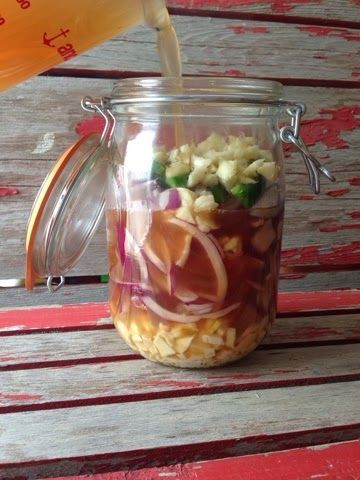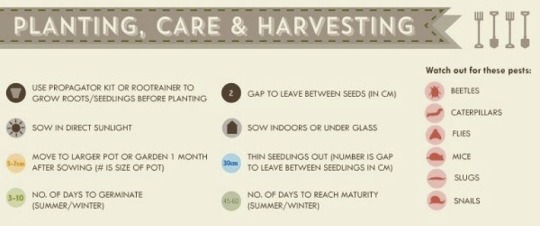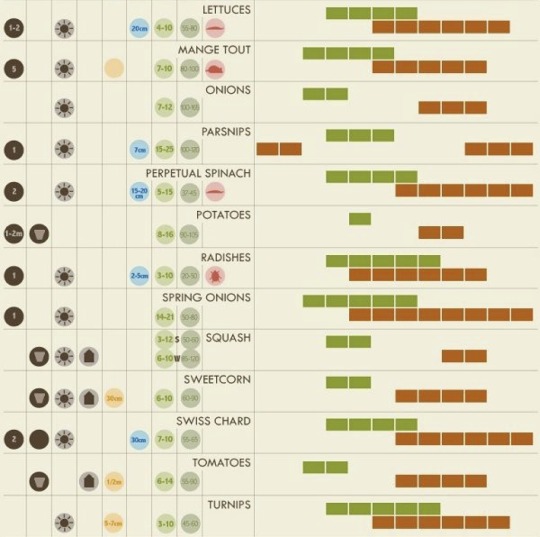Text
Mama May Have
(By Doreen Aisen) They’re hating on the mothers dressed in hospital gowns droopy boobs and empty wombs, plastic hearts that sob semi trailer herds marching down the street equipped up to their youth with their uppa vista tanks, baby 100% natural 100% organic 20% exploitation always summing up to a hundred Working over time to pay for their Prada High heeled and body trimmed all that money well spent to ensure their very best -- in absence. Someone else’s mother stepping in the stead of the mother the diapering, the feeding and the loving, the cry it out so you can sleep at night crying someone else’s tears Mahal kita cause I love you more than my mother, at least on weekdays. They are hating on the mothers pumping their juices asking too much cause they can’t just figure it out are you the mother or the worker? are you the moneymaker? are you the dollhouse dream, with an apron tying your hands behind your back? what about those mothers ? They cannot afford to breed and bread with a 9 to 5 that doesn’t pay for daycare doesn’t pay for college at least the mother in law buys the diapers * * * I was hating on my mother too How could I not The weakness of the single-mommed so young too naive to bare or even calculate Hating on her need Too good to stand the fight That crumbled her to pieces The exploitation of a man with velvet pants and golden chain Tied up to a poll of motherly martyrdom. Now, Mother I’m a mother too
2 notes
·
View notes
Text
Spreading Subtle Radical Change
How to be a radical doula, midwife, and reprojustice advocate even if you’re allergic to the term “radical”
-Do your radical birth readings in public. Carry your holistic birth books in full view.
-Invite your friends to moon/women circle gatherings to discuss your health openly in a safe space. Be the radical sage femme in your group!
-Read Women’ Sexual Rites of Passage and share that sh*!!
-Buy your friends Diva Cups and Luna Pads for birthdays/holiday gifts. Or make your own reusable pads and some extras for your pals.
-Start a Meet the Doulas and/or Meet the Midwives Night in your community. If no one shows up for the first few, that’s normal. KEEP GOING! Change takes patience and hard work.
-Listen to Grandma’s tell you their birth stories. It wasn’t normal to talk about that experience back in the day and chances are they could use a kind ear to listen to them. It’s never to late.
-Volunteer with a Girl Scout Troop or other program aimed at helping young women feel empowered and teach them to chart their cycle. Give them positive body reinforcements and emotional strength.
-Find some rad zines on reproductive health and justice and help copy and spread them around your community.
-Say “your midwife” in conversations about reproductive health instead of deferring to the culturalnormative “your doctor/OB.”
-Buy (only second hand to not have masked demand)/collect all of the terrible birth books (What to Expect, Girlfriends Guide, Dr.Oz You Having a Baby, etc.) and use them as kindling to heat your house during circle gatherings.
-Throw your friends and family a Mother’s Way ceremony instead of a baby shower.
-Don’t buy baby shower gifts like onsies and creams Instead, offer your time to help with mama and baby and/or start a meal train. Encourage others to do the same.
-Become aware of your language around reproductive health to include all identities and family structures.
-Look beyond Ina May and Ricki Lake for your birth knowledge (not that they’re not awesome and powerful forces for change) to include voices from other countries and racial/gendered/cultural backgrounds which have contributed greatly to the overall understanding of reproductive health and justice.
-Be an advocate for cis and trans gendered persons and queer folks who are expecting. Seek out resources to educate yourself on the unique (and un-unique) needs of these communities. If you do not wish to take these important steps, at the very least, learn who in your community is there to support them and offer a referral.
-Change your language around pregnant women. “You’re getting so big!” “What does your doctor say?” talking about inductions and due dates and “eating for two” and cesareans and how “overdue” they might be is not always positive birth speak. Let the pregnant person lead the conversation and mirror her speech. You can help educate expectant parents on their options without being pushy or trying too hard not to seem pushy by copying the normative birth speech by reminding them that they have options and are the boss of their birth.
-Stop retelling birth and pregnancy horror stories. Every birth is different. Fear is not a positive motivator in pregnancy.
-Take a training from Shafia Monroe and the International Center for Traditional Childbearing and/or Jennie Joseph and Commonsense Childbirth.
-Find or make your own radical birth pamphlets. Print and distribute them as far and wide as possible. Take up a collection from birth workers in your community to help pay for printing costs and ask them to help spread them around. Write them in other languages or have someone help you translate them. Some example topics:
What are the Rights of Childbearing Women?
What is Informed Consent in Birth?
What is a Doula?
What is a Midwife?
The Option of Home Birth or Birth Center Birth.
Positive Body Affirmations for Birth.
Your Community Pregnancy and Birth Resources.
The Importance of the Human MicroBiome in Pregnancy and Birth.
Nutrition in Pregnancy and Beyond.
What are Full Spectrum Reproductive Services?
Important Questions to Ask your Pregnancy Care Provider.
Choosing the Best Care Provider in Pregnancy and Birth.
What is a Postpartum Doula?
How Do I Plan for Caring for a Newborn?
-Ask your library and local bookstores to stock the following books on pregnancy and birth:
Heart and Hands by Elizabeth Davis
Pushed by Jennifer Block
The Doula Book by Klaus and Klaus
“Listen to Me Good” The Story of an Alabama Midwife by Margaret Charles Smith
Birth as an American Rite of Passage by Robbie Davis-Floyd
Spiritual Midwifery by Ina May Gaskin
Adventures in Natural Childbirth
The Thinking Woman’s Guide to a Better Birth by Sheila Kitzinger
Orgasmic Birth by Elizabeth Davis and Deborah Pascali-Bonaro
Born in the USA by Marsden Wagner
Why We Need Midwives by Michel Odent
Birth Matters by Ina May Gaskin
Birthing From Within by Pam England
Why Not Me? The Story of Gladys Milton by Wendy L. Bovard and Gladys Milton
A-Z for a Healthy Pregnancy and Childbirth by Jacky Bloemraad-de Boer
Birth Models that Work by Robbie Davis-Floyd
-Make What is a Doula/What is a Midwife/Rights of Childbearing Women/Choosing a Care Provider bookmarks to sneakily stick in those ;-) (Don’t get caught).
-Host community screenings of The Business of Being Born and Orgasmic Birth and The Milky Way and Freedom for Birth with panel discussions from local birth workers and families after.
-Put together community baby showers to help families in need collect items and support for birth and newborn care items.
-Start a donation based help center where fellow birth workers agree to meet with expectant families who would like a safe space to talk to a knowledgeable care provider on general issues about rights, options, and choices in reproductive services.
-Start a Centering Birth Support space where expectant parents can meet for check ups, childbirth ed, breastfeeding classes, and more.
-Host an Improving Birth Rally in your town.
-Start a (FREE!) milk bank
-If your community does not currently have resources for homeless or incarcerated persons who are expecting, start some!
-Get those self breast exam door handle cards and stick them all over the place.
-Be a positive example of healthy body image, positive birth speech, open communication, inclusivity, and reproductive knowledge within your immediate circle of friends and family. Small discussions can lead to major changes and empowerment!
8 notes
·
View notes
Note
do you mind recommending herbology books for herbal medicines? I'd appreciate it, you're work and blog is very inspiring :)
Hey 🌷 ! Thanks for de luv . Here is some past posts I made for recommended plant medicine learnin’ . Love 2 all ::
Foraging Book Post :: learning to identify plants + get to know their individual spirits is a great place to start . it takes a lot of time, many seasons, one may need patience ! but the gifts of communication with the earth are priceless
Main Herbal Book List Post :: this is my personal herbal book list that started everything for me . i basically read as many books as i could to learn about the same plant over + over again until i developed my own philosophy . within this search, you find yourself + the area of the plant world you are called too . there is so much information out there + much work needed to be done to help educate the people // preserve + protect the environment
Intensive Herbal Reading Post :: if you want to get into the scientific flow, including clinical trails, pharmacopeia, use in a naturopathic/clinical setting . excellent if you want to learn to be a clinical herbalist
19 notes
·
View notes
Link

What you will receive if chosen as the winner! Starting in the upper left-hand corner, an enamel painted plate with a witch riding on a broom, done by our wonderful artisan Collette. Under that, three bars of botanical soaps in Peppermint Tingle, Jasmine and Green Tea, and Sea Breeze (4...
104 notes
·
View notes
Link
A late Woody Guthrie recording; one of his finest.
On Thanksgiving I went with my Mom to see the Guthries and Carnegie Hall. It was quite the experience, listening to Guthries of all ages working their magic.
And then Sarah Lee Guthrie started singing this song. A Capella. It was breathtaking, and mind blowing with relevance. I can't stop listening to this song since.
1 note
·
View note
Text
And if u have kids I would add chamomile, elder flower and elder berry to fight off fevers and colds or upset stomach
Herbs For Your Medicine Cabinet

By Michael Castleman
Studies come and go. The study du jour might tout medicinal herbs or trash them. But people who focus only on the latest study lose something important—perspective. Want to use herbs confidently? Then take the long view. Examine the evidence that accumulates slowly over many years. The following 16 herbs have stood the test of time and are proven to be reliable healers. Not every study supports their use (the same could be said for most pharmaceuticals), but the weight of the evidence clearly shows that these herbs are safe (with certain caveats) and effective. They deserve a place in your medicine cabinet.
Aloe for Burns and Cuts
Aloe (Aloe vera) is the herb for minor burns and cuts. In one study published in the Journal of Dermatological Surgery and Oncology, 27 people had burns treated with aloe or standard medical care. In the standard-care group, healing took 18 days, but in the aloe group, it took only 12 days. “Aloe is my first choice for burns,” says botanist James Duke, Ph.D., former chief of the U.S. Department of Agriculture’s Medicinal Plant Research Laboratory and author of The Green Pharmacy (Rodale, 2000). “Keep a potted aloe on your kitchen windowsill. For minor burns, snip off a thick leaf. Slit it open. Scoop out the inner leaf gel and apply it to the burn once or twice a day.” Aloe requires no care beyond weekly watering.
Dosage: If you use a commercial aloe gel, follow label directions.
Red Flags: Aloe helps heal superficial wounds but not deep wounds, such as surgical incisions.
Black Cohosh for Hot Flashes
American Indians first introduced colonists to black cohosh (Cimicifuga racemosa), which they used to treat many conditions, including menstrual problems and recovery from childbirth. For 40 years, Europeans have used black cohosh to treat menopausal discomforts. During the past decade, the herb has become popular in the United States. Occasionally, a study questions its benefit, but the clear majority shows black cohosh effective for hot flashes. How the herb works is still a mystery, but it does not act like estrogen, so it’s safe for women who can’t take the female sex hormone—for example, those with a history of breast cancer. “Black cohosh is definitely worth a try,” says Mark Blumenthal, executive director of the Austin, Texas-based American Botanical Council (ABC), the nation’s leading herb-education organization, “especially now that hormone replacement therapy has been shown to do more harm than good.”
Dosage: Follow label directions.
Red Flags: Side effects are rare but possible: A few users have reported stomach distress, dizziness, headache and allergic reactions. Commission E, the German equivalent of the U.S. Food and Drug Administration, says black cohosh should not be taken for longer than six months. After that, consult your doctor or herbalist.
Remember The Tale of Peter Rabbit? After the young bunny’s “hare”-raising adventures, his mother soothes his jangled nerves and upset stomach with chamomile tea. Peter’s mother was right. Chamomile (Matricaria recutita) soothes both the nervous system and the gastrointestinal tract.
Dosage: 1 tea bag or 1 to 2 teaspoons of dried flowers per cup of boiling water. Steep a few minutes and drink as much as you’d like.
Red Flags: Allergic reactions are possible, especially if you’re allergic to pollens.
Read More
2K notes
·
View notes
Note
Cheap eats
Is there any meals you or a follower can suggest for a $25 budget a week for 3 people? :/ really desparate for ideas and only have $62 to last me the rest of the month.
Here are some meal ideas and cheap groceries to consider:
inexpensive vegan meal ideas
more inexpensive vegan meal ideas
even more inexpensive vegan meal ideas
vegan basics on a low budget
how to eat vegan on a budget
resources for eating vegan on a budget
the 10 cheapest foods money can buy
10 foods with a long shelf life
11 secrets to properly freezing produce
Here are a few recipes:
fluffy little pancakes
bean & zucchini cutlets
protein rich buckwheat casserole with legumes
eggplant & potatoes in tomato sauce
black bean meatballs
zucchini, garlic & chili linguine ($2 dish)
chili sin carne
cheap easy protein soups
simple tomato noodle soup with potatoes
cauliflower stew with white beans
simple crumb cake with apple jam
Here’s a little bit that I can offer about shopping cheap/cheap meal ideas: canned veggies/fruits are the cheapest, frozen veggies/fruits are a second cheaper (but not as cheap to canned) option, homemade soups are a really good option for more portions while still being cheap. If you’re able to, I suggest looking for cheaper grocery stores in your area (ex: Aldi). I really hope this helps some.
297 notes
·
View notes
Text
Nine Herbal Safety Tips
By Linda B. White M.D.
Humans, like most mammals, have turned to plants for food and medicine since our earliest times. No doubt some of our ancestors suffered the consequences of unfortunate choices along the way. If you read the book or watched the movie Into the Wild, you realize we sometimes still err, confusing a poisonous plant for edible greenery. People still mistake the death cap mushroom for something more savory. And a couple of years ago, I even found some teenage boys sitting along an irrigation ditch, fashioning poison hemlock stems into cigarette holders.
Nevertheless, most of the medicinal herbs sold in the United States are safe when taken in recommended dosages. More than 38 million Americans use herbs each year, yet the majority of calls to Poison Control Centers about plant ingestions have to do with people (usually children) and pets eating potentially poisonous house and garden plants—not medicinal herbs.
To ensure your experiences with medicinal herbs remain positive—without inadvertent mishaps—follow these nine basic guidelines.
1. Start with Food Herbs
You can bet on safety when you use herbs as foods—think garlic, ginger, nettles, dandelion greens, shiitake mushrooms, nettles, burdock root (also called gobo) and rosehips. Culinary herbs—thyme, oregano, turmeric, cayenne—are also low-risk. Externally applied herbs (compresses, poultices, salves) provide another good testing ground.
The next step is to begin experimenting with infusions (commonly known as “teas”). Many of the food herbs mentioned above can be dried, chopped, and steeped as tea. Extracts of herbs in alcohol (tinctures) or glycerin (glycerites) generally are more potent. Solid extracts, in which all the solvent has been removed, and carbon dioxide-extract herbs are stronger still. Standardized extracts are designed to have a consistent level of suspected active ingredients from batch to batch. This process allows for more precise dosing and easier use in research, but also makes the product closer to a drug.
Read More
337 notes
·
View notes
Text
Six Medicinal Herbs to Grow at Home
By Patti Moreno
Even urban dwellers with little more than a balcony, tiny backyard or windowsill can grow their own food. Patti Moreno’s Gardening By Cuisine (Sterling 2013) offers a unique plan for creating low-maintenance organic “cuisine gardens” that produce delicious vegetables, fruits and herbs. In the following excerpt, learn how to add six medicinal herbs to your garden for easy access to natural remedies for everything from headaches to sore throats.
1. Echinacea
(Echinacea purpurea)
This native perennial, also known as the purple coneflower, is a glorious garden plant that grows 24 to 36 inches tall, and sometimes even taller. It has a long blooming period, starting in the summertime. Echinacea grows large purple flowers that look similar to daisies. This drought-tolerant herb is a must in a summertime bouquet. Echinacea flowers attract wildlife like bees, butterflies, and other essential garden pollinators.
Echinacea boosts the immune system to prevent the common cold or flu. Make it into a tea, as described below.
Making Echinacea Tea
To make echinacea tea, use 1 to 2 teaspoons of dried or 2 to 4 teaspoons of fresh echinacea flowers, leaves, stems, or roots per cup of water. Allow whatever part of the plant you’re using to steep in a teapot in boiling water for 15 to 20 minutes. Then strain the echinacea and pour the tea into a cup. You can sweeten the tea, if you like, with honey, fresh stevia leaves or raw agave nectar.
2. Feverfew
(Tanacetum parthenium)
This perennial medicinal herb is part of the chrysanthemum family. It’s easy to grow, and once it blooms in spring, it doesn’t stop. You can use the versatile leaves and flowers of this prolific plant to make a healing tea or a fragrant summertime bouquet. Feverfew has been used in Chinese medicine for millennia to reduce fevers and help with headaches and digestive ailments. A bushy, popular herb, feverfew was used as a filler plant in cottage-style Victorian flower beds and gardens.
Feverfew can be at your service at any time throughout the growing season. Simply prune off enough flowers and leaves to make tea for immediate consumption, or harvest more to dry and use later in the winter. During the growing season you can chew on a few leaves to relieve a headache, or steep 4 tablespoons of fresh feverfew (leaves, stem, and flower) per cup of boiling water for 10 minutes. Then strain and drink the tea.
You can also dry the entire plant and use it to make tea. Steep 2 tablespoons of dried feverfew per cup of boiling water for 10 minutes. Strain and drink the tea.
Feverfew helps relieve migraines as well as fevers, minor pain and inflammation.
Read More
757 notes
·
View notes
Text
How to Make Fire Cider

Some of the traditional benefits of Fire Cider’s ingredients include:
Horseradish ~ The antibacterial properties of Horseradish have been used to fight bacteria. Horseradish strongly stimulates the digestion, increasing gastric secretions and appetite. It’s also a good diuretic that promotes perspiration, making it useful in fevers, colds, and flu. Horseradish is also an expectorant and mildly antibiotic, and can be of use in both respiratory and urinary tract infections.
Ginger ~ is valued for its ability to warm the stomach, to ease vomiting & nausea and to fight off colds, chills and coughs. Ginger is useful for all types of congestion in the body.
Garlic ~ supports the immune function and opens the pores of the skin to lower a fever. This herb’s antibacterial and antimicrobial properties make it useful in treating bladder and kidney infections , yeast infections , strep throats and ear infections
Cayenne ~ is useful for increasing circulation and to get mucous flowing. This herb is an anti-inflammatory and anti-irritant. It is used as a digestive aid to stimulates gastric juices. Many people report relief from migraines with this herb as well.
How to Make Fire Cider
Ingredients
Read More
323 notes
·
View notes
Text
How to Make Fire Cider

Some of the traditional benefits of Fire Cider’s ingredients include:
Horseradish ~ The antibacterial properties of Horseradish have been used to fight bacteria. Horseradish strongly stimulates the digestion, increasing gastric secretions and appetite. It’s also a good diuretic that promotes perspiration, making it useful in fevers, colds, and flu. Horseradish is also an expectorant and mildly antibiotic, and can be of use in both respiratory and urinary tract infections.
Ginger ~ is valued for its ability to warm the stomach, to ease vomiting & nausea and to fight off colds, chills and coughs. Ginger is useful for all types of congestion in the body.
Garlic ~ supports the immune function and opens the pores of the skin to lower a fever. This herb’s antibacterial and antimicrobial properties make it useful in treating bladder and kidney infections , yeast infections , strep throats and ear infections
Cayenne ~ is useful for increasing circulation and to get mucous flowing. This herb is an anti-inflammatory and anti-irritant. It is used as a digestive aid to stimulates gastric juices. Many people report relief from migraines with this herb as well.
How to Make Fire Cider
Ingredients
Read More
323 notes
·
View notes
Text
10 Days of Positivitea Challenge - Day 2! #blend
10 Days of Positivitea Challenge – Day 2! #blend
“The world is but a canvas to our imaginations.” – Henry David Thoreau
Blending tea is an art! Have funtoday blending your tea. Put on your favorite song, do a little dance, let the sunshine in. Make a little morning celebration of it. Whether you chose a complex blend with many different herbs and flowers or a simple tea of just one herb, take the time to appreciate the aroma, the beauty, the…
View On WordPress
2 notes
·
View notes
Photo

Taking the time to appreciate the red clover in my tea blend for #day2 #blend #10daysoftea challenge. It is a powerful herb to treat lymphatic congestion and balance Estrogen levels. And it is literally everywhere!
I attended a teachers’ workshop today where teaching the concept of g-d was tackled and there was some kind of strange insistence from the facilitator that a 2 year old can’t understand g-d. While she was saying that, I kept thinking that observation of nature, movement, the flow of water, scent of a flower, or even another baby teaches children so much about g-d. They can sense godliness in their non-verbal way. Especially if you let them come close to nature – where the natural world can become a dwelling place for the spiritual.
As I was making my tea, I watched the clover tops expand in the water and take on a new, and fuller form. The water extracted hidden qualities from the clovers. That reminded me of that power of plain observation that often opens up our eyes to other deeper observations and realizations.
0 notes











